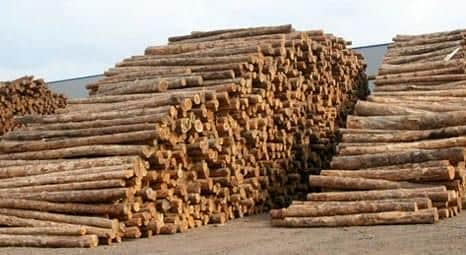
Softwood logs and softwood lumber imports to China have more than tripled in ten years with lumber volumes surpassing logs by 36% in 2017
With limited domestic forest resources, China continues to be a major importer of forest products in order to meet its growing domestic demand for logs, lumber, chips, pulp and paper. In 2017, import volumes of both softwood logs and softwood lumber reached all-time highs despite a slowing activities in the house construction sector. Over the past ten years, the total importation of softwood logs and softwood lumber has gone up 3.5 times in roundwood equivalents (RWE), according to the Wood Resource Quarterly (WRQ).
Over the past two years, importation of lumber has grown much faster than has importation of logs, with lumber import volumes in 2017 surpassing log import volumes by 36% (in RWE). This is a shift from the past, when there were substantially more shipments of logs than lumber entering Chinese ports. Today, China is the world’s largest importer of logs and the second largest importer of lumber after the US. With these large volumes being shipped to this growing dynamic market, there have been a number of changes in supply sources based on availability and costs over the years.
On the lumber side, the biggest changes over the past five years include a more than doubling of shipments from Russia, declining imports from North America, and higher shipments from the Nordic countries, reports the WRQ. In the short to mid-term, it is likely that European lumber producers will increase shipments to China, while lumber producers in Western Canada may choose to ship their products to the hot US lumber market where lumber prices are at record high levels.
The changes in log suppliers over the past five years have been more dramatic than those for lumber, and there are also fewer countries shipping logs to China as compared to the number shipping lumber. Five supplying countries, New Zealand, Russia, the US, Australia and Canada together accounted for 92% of total log imports in 2017. The biggest change from 2013 to 2017 was that Australia became a major source of logs, with volumes increasing from 1.6 million m3 in 2013 to 4.2 million m3 in 2017.
